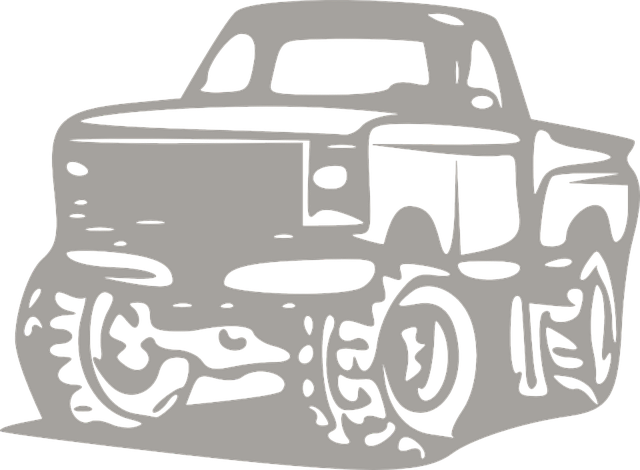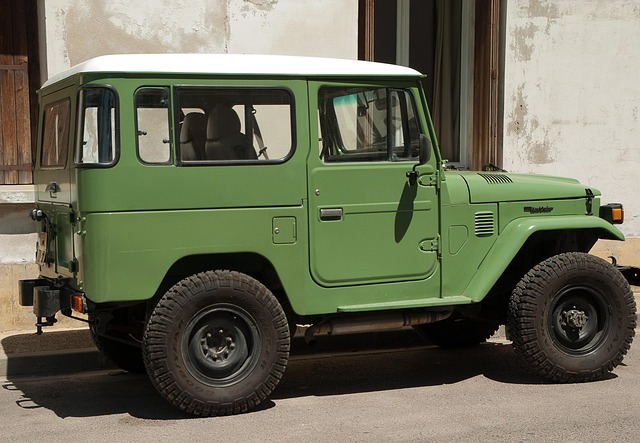Truck winches are essential for heavy towing and off-road exploration, with options like electric, hydraulic, or mechanical models catering to various needs. RGV (Rigid Vehicle) wheels complement these winches by providing maximum traction and control on challenging terrains, from steep inclines to muddy paths. Choosing the right winch involves considering capacity, mounting style, and control type; regular maintenance and safety precautions are crucial. Winches with RGV wheels streamline operations in industries like construction and logging, improving productivity and safely handling oversized loads.
“Unleash your truck’s true potential with the power of winches! From rugged off-road adventures to heavy-duty hauling, understanding the right winch for your needs is key. This comprehensive guide takes you on a journey through the world of truck winches. We explore the purpose and benefits of these essential tools, dissect various types, and highlight the unsung heroes: RGV wheels. Learn about crucial factors in selection, installation tips, maintenance, safety, and discover how winches enhance your truck’s capabilities in real-world scenarios.”
- Understanding Winches and Their Purpose for Trucks
- Types of Winches: A Comprehensive Overview
- RGV Wheels: The Unseen Heroes in Truck Winching
- Factors to Consider When Choosing a Truck Winch
- Installation, Maintenance, and Safety Tips
- Real-World Applications: How Winches Enhance Truck Capabilities
Understanding Winches and Their Purpose for Trucks

Winches are essential components of trucks, particularly those used for heavy-duty towing and off-road adventures. These powerful mechanical devices serve a crucial purpose by providing the necessary force to lift, pull, or move objects that are too heavy for manual handling. In the context of trucks, winches are typically mounted on the front or rear of the vehicle, offering a versatile solution for various tasks.
One key advantage of using winches is their ability to enhance a truck’s capabilities, especially when navigating challenging terrains. With a powerful winch, drivers can overcome obstacles like steep inclines, muddy paths, or even free stuck vehicles. RGV wheels, equipped with robust tread patterns and enhanced durability, work in harmony with these winches to ensure maximum traction and control during such demanding operations.
Types of Winches: A Comprehensive Overview

Winches for trucks come in various types, each designed for specific applications and terrain. One key category is electric winches, which are popular due to their ease of use and efficiency. These winches are ideal for everyday towing and recovery tasks on paved roads. On the other hand, hydraulic winches offer raw power and are suitable for off-road adventures and heavy-duty operations.
For specialized needs, there are mechanical winches known for their durability and reliability in extreme conditions. When considering winches, factors like capacity, mounting style (like RGV wheels), and control type (remote or manual) play significant roles. The right winch ensures safe and effective towing, making it a crucial investment for truck owners venturing off the beaten path.
RGV Wheels: The Unseen Heroes in Truck Winching

In the world of truck winching, a vital yet often overlooked component is the RGV wheel. These wheels, or Rigid Vehicle Wheels, are the unseen heroes that ensure smooth and efficient towing. RGV wheels are designed to handle heavy loads with precision and stability, making them indispensable for challenging terrain and emergency situations. Their robust construction allows them to withstand extreme stress, providing a reliable foundation for winching operations.
When it comes to enhancing the capabilities of truck winches, RGV wheels play a pivotal role. Their superior strength-to-weight ratio enables trucks to navigate through varied conditions, from rugged off-road paths to congested urban streets. These wheels are engineered to resist corrosion and wear, ensuring consistent performance over time. In light of this, RGV wheels are not just accessories; they are game-changers that empower truck winching operations, fostering efficiency and safety on the road.
Factors to Consider When Choosing a Truck Winch

When selecting a winch for your truck, several key factors come into play, ensuring you choose a reliable and suitable option. One critical consideration is the load capacity; understanding your vehicle’s towing limits and selecting a winch that can handle those demands is essential. Winches are designed to assist in various lifting and pulling scenarios, so knowing the specific tasks you’ll be performing is vital. For instance, if you frequently encounter off-road challenges, a powerful winch with robust RGV wheels might be ideal for navigating rough terrain.
Another important aspect is compatibility. Truck winches need to seamlessly integrate with your vehicle’s make and model. Factors like mounting style, electrical requirements, and physical dimensions should align with your truck’s specifications. Additionally, the quality of construction and materials used can significantly impact performance and longevity. High-quality winches often boast durable frames, powerful motors, and advanced safety features, ensuring a secure and efficient lifting experience.
Installation, Maintenance, and Safety Tips

Installing a winch on your truck is a straightforward process that involves securing the device to your vehicle’s frame using robust mounting hardware. Always ensure compatibility with your truck model and choose a winch rated for your intended use, considering factors like capacity, cable type, and recovery speed. When mounting, pay attention to the winch’s alignment and positioning to guarantee optimal performance.
Regular maintenance is key to keeping your RGV wheels winch in top condition. This includes periodic checks of the cable for any signs of wear or damage, ensuring smooth operation by lubricating moving parts as per the manufacturer’s guidelines, and regularly inspecting all connections and bolts. Never operate the winch if any components appear faulty, and always refer to the manual for specific maintenance instructions tailored to your model. Safety is paramount; never attempt a recovery without properly securing the winch and utilizing appropriate safety equipment, such as reflective gear and secure anchor points.
Real-World Applications: How Winches Enhance Truck Capabilities

Winches for trucks serve a multitude of real-world applications, enhancing their capabilities across various terrains and tasks. These powerful mechanisms are particularly useful in industries like construction, logging, and off-road adventures where trucks often navigate challenging landscapes. With a truck winche, operators can easily tow heavy equipment, pull stuck vehicles, or lift and move oversized loads that traditional towing methods might struggle with.
For instance, when equipped with robust rgv wheels (all-terrain wheels), winches enable trucks to traverse rough terrain, providing the traction and stability needed for safe and efficient operations. This capability is invaluable in situations where a vehicle gets stuck in mud, sand, or snow, allowing rescue and recovery efforts to proceed smoothly. Moreover, winches facilitate faster load securing and unloading processes at job sites, improving overall productivity and streamlining workflow.
In conclusion, winches for trucks are indispensable tools that enhance their capabilities across various terrains and applications. From understanding their purpose to navigating factors like RGV wheels, each component plays a crucial role in ensuring efficient towing and safety. By choosing the right winch, maintaining it properly, and adhering to safety guidelines, truck owners can maximize their vehicle’s potential, making winches an essential investment for any trucking enthusiast or professional fleet manager.
